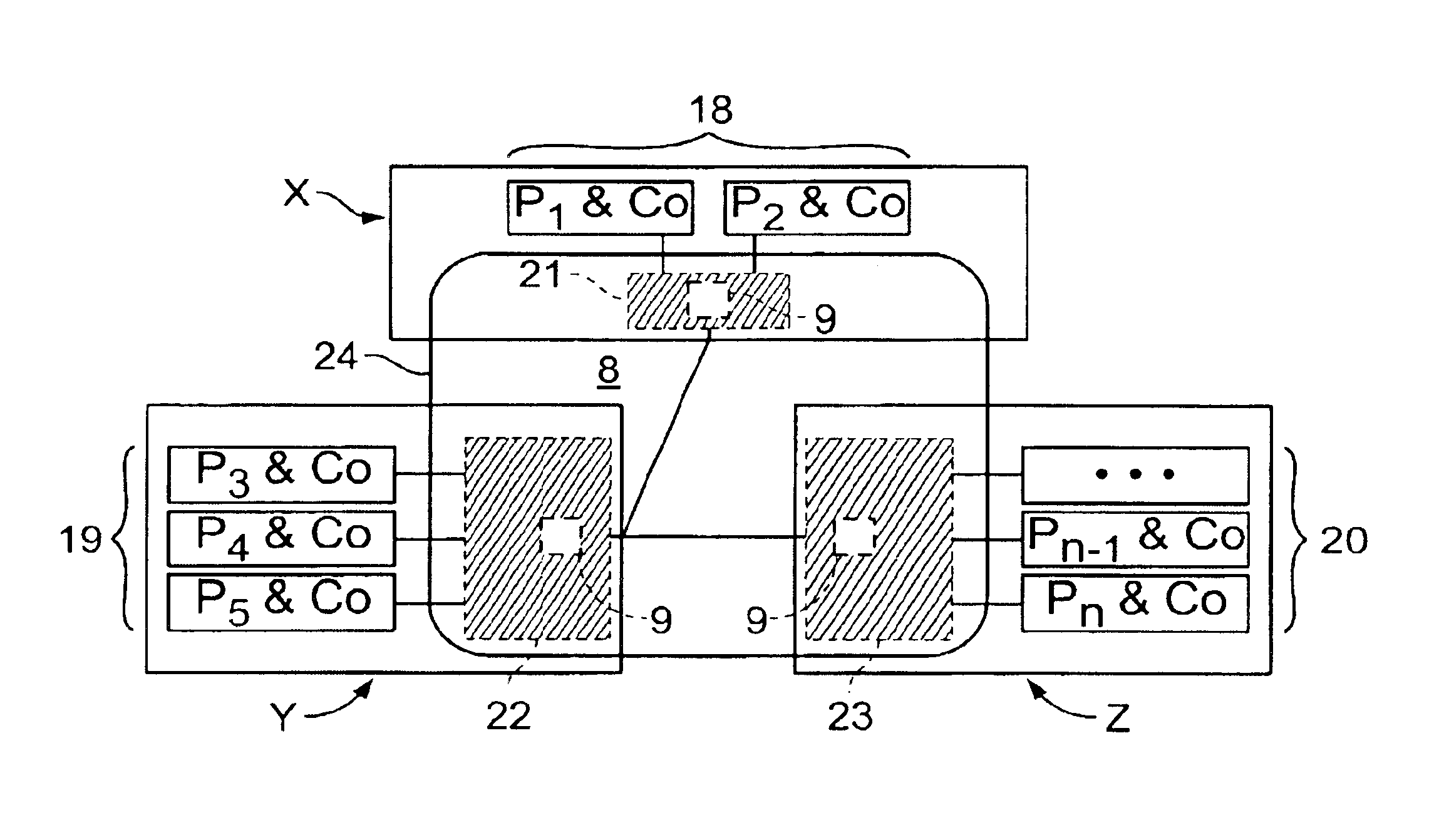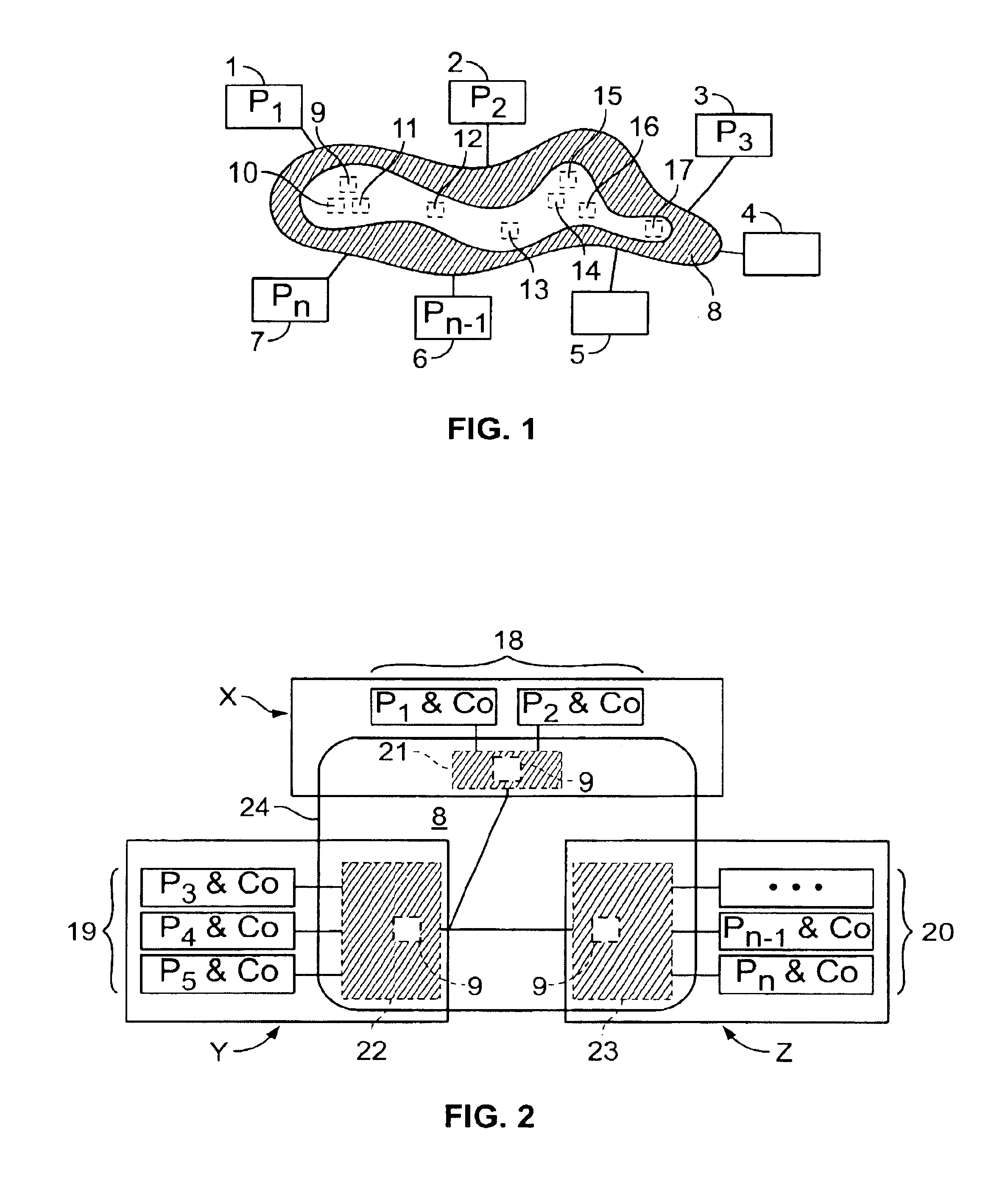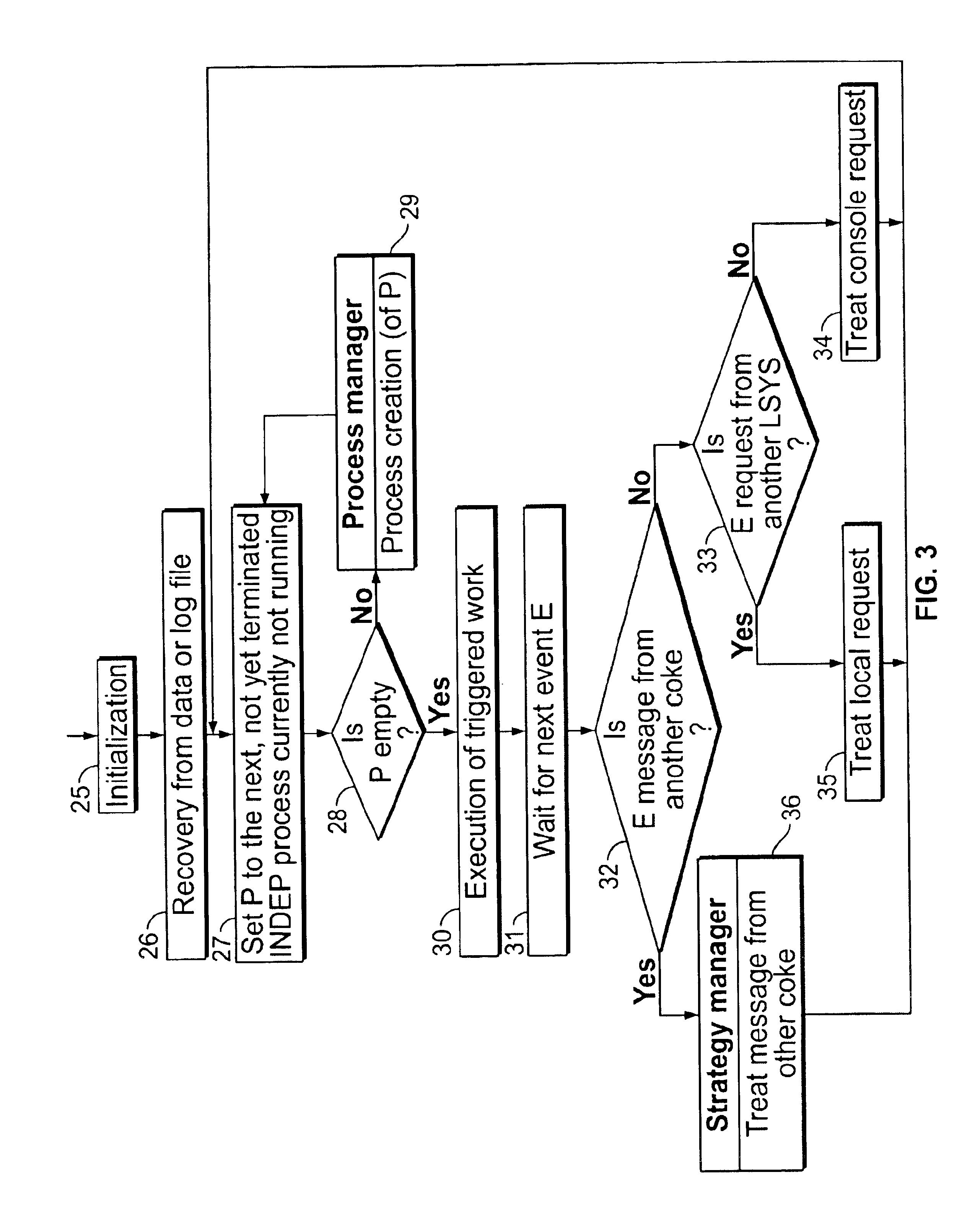Coordination system
- Summary
- Abstract
- Description
- Claims
- Application Information
AI Technical Summary
Benefits of technology
Problems solved by technology
Method used
Image
Examples
example 1
Producer-Consumer
A classical example for the administration of shared resources is the consumer-producer problem, where an arbitrary number of distributed, parallel-running processes exist, which either produce or consume data. All produced data shall be equally consumable by all consumers (i.e. without preference), and as soon as a data item has been consumed, it must not be consumed again.
A solution based on write-once communication objects by means of the described coordination system, uses as a common data structure an infinitely growing list into which the produced items are written one after the other (such a list is termed “stream”). The beginning of the list is represented by a communication object termed “Root”, into which the first producer writes a list cell in a transaction, which consists of two elements, namely a head and a tail. The producer writes in the same transaction its data item into the head and a newly created communication object, termed “flag”, the meaning ...
example 2
Travel Reservation
A trip is to be arranged, and the following reservations are needed: a flight from Vienna to Paris, a hotel room in Paris and a car in Paris. The flight can be booked at one of the three airlines A, B, or C. The hotel room can be booked at either hotel H or hotel I. The car can be booked at car rental company V or W. It is assumed that the client does not have any reservation preferences. Moreover, a flight reservation can be cancelled. In this case a “reservation reversion” is to be called as compensation action at the corresponding airline database. Therefore, it is not necessary to require that the local database system of the airline offer a 2-phase-commitment, i.e. the flight reservation transaction can be closed as soon as possible, so that the local airline database is not blocked too long by the global travel reservation transaction.
Hotel room reservation and car reservation transactions should not be compensatable, i.e. it must be demanded that the corresp...
PUM
 Login to View More
Login to View More Abstract
Description
Claims
Application Information
 Login to View More
Login to View More - R&D
- Intellectual Property
- Life Sciences
- Materials
- Tech Scout
- Unparalleled Data Quality
- Higher Quality Content
- 60% Fewer Hallucinations
Browse by: Latest US Patents, China's latest patents, Technical Efficacy Thesaurus, Application Domain, Technology Topic, Popular Technical Reports.
© 2025 PatSnap. All rights reserved.Legal|Privacy policy|Modern Slavery Act Transparency Statement|Sitemap|About US| Contact US: help@patsnap.com



